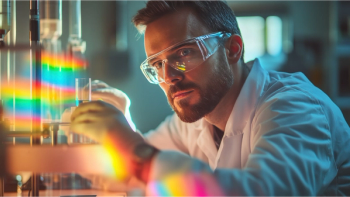
|Articles|September 1, 2003
- Spectroscopy-09-01-2003
Pharmaceutical Industry Embraces NIR Technology (PDF)
Near-infrared spectroscopy moves into warehouses to check incoming drug substances, excipients, and packaging materials, and onto the production floor to monitor characteristics such as blend uniformity, moisture content, and dissolution rate.
Advertisement
Articles in this issue
over 22 years ago
Derivatives in Spectroscopy, Part II: The True Derivative (PDF)over 22 years ago
IR Technology Aids in the Battle Against SARS (PDF)Newsletter
Get essential updates on the latest spectroscopy technologies, regulatory standards, and best practices—subscribe today to Spectroscopy.
Advertisement
Advertisement
Advertisement




